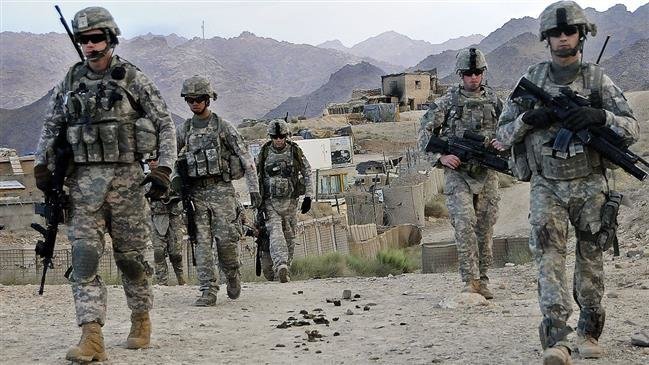U.S. to withdraw half of its 14,000 troops from Afghanistan

U.S. President Donald Trump has ordered the start of withdrawing some 7,000 troops from Afghanistan, about half of the total number of American boots on the ground in the war-torn country.
The abrupt decision, which came a day after the president’s announcement of military withdrawal from Syria, has stunned even Afghan officials who say they have not been briefed on the plans.
Reuters had earlier quoted a U.S. official as saying that the number of forces to be pulled out from Afghanistan was 5,000. However, the New York Times later increased the number to 7,000, quoting two defense officials.
The official who spoke to Reuters on the condition of anonymity said timelines were being discussed but it could happen in weeks or months.
Senator Lindsey Graham, a close ally and frequent golf partner of Trump, on Thursday warned the troop pullout from Afghanistan could ultimately lead to another attack on America similar to the one on Sept. 11, 2001.
Graham said the conditions in Afghanistan made the withdrawal a high-risk strategy. "If we continue on our present course we are setting in motion the loss of all our gains and paving the way toward a second 9/11."
Trump’s decision on Afghanistan was made at the same time he decided to pull American forces out of Syria, one official said.
The plan to reduce American forces in the country comes just days after the United Arab Emirates hosted two days of talks between the United States and the Taliban.
Zalmay Khalilzad, the Trump administration’s special envoy to Afghanistan, said the Taliban’s demand remained an agreement over the withdrawal of foreign forces from Afghanistan. The U.S., meanwhile, has sought assurances from the militant group that its forces would not be attacked.
It remains unclear how the newly-planned troop drawdown could affect the administration’s negotiations with the Taliban.
The Abu Dhabi meeting was the latest in a flurry of diplomatic efforts aimed at putting an end to a 17-year-old war in Afghanistan which began with the U.S. invasion in 2001 to topple the Taliban.
A delegation from the Afghan government also traveled to Abu Dhabi “to begin proximity dialogue with the Taliban delegation and to prepare for a face-to-face meeting between the two sides,” the Afghan presidential spokesman Haroon Chakhansuri said.
The militant group, however, has not acknowledged meeting Afghan officials.
While announcing a new Afghan strategy last year, President Trump was critical of the Obama administration for signaling to the Taliban U.S. plans for a drawdown openly. He also indicated he would keep troops in Afghanistan indefinitely to prevent the country's collapse amid a Taliban resurgence.
Besides the current contingent of roughly 14,000 American troops, there are 16,000 NATO and allied troops deployed in Afghanistan.
If American troop levels drop to around 7,000, they will be at their lowest since March 2002, when the largest ground assault of the war at that time began during Operation Anaconda.
More than 2,400 Americans have died in Afghanistan since 2001, with 13 troops killed this year. Since the end of 2014, when the Pentagon declared an end to combat operations in the country, more than 25,000 Afghan soldiers and police have been killed.
U.S. not Middle East’s Policeman
The U.S. president also defended his decision on Syria, arguing that the U.S. does not want to be the “Policeman of the Middle East, getting NOTHING but spending precious lives and trillions of dollars protecting others."
“Do we want to be there forever? Time for others to finally fight....," he added.
He said in another tweet that one should not be surprised by the abrupt announcement.
"Getting out of Syria was no surprise. I’ve been campaigning on it for years, and six months ago, when I very publicly wanted to do it, I agreed to stay longer."
He later tweeted that fighting Daesh terrorists in Syria would be up to the Syrian government troops aided by Russia and Iran.
The pullout from Syria prompted U.S. Secretary of Defense Jim Mattis to finally announce his long-anticipated resignation to allow President Trump to have a defense chief whose views are more aligned with the U.S. president, he said in his resignation letter Thursday.
(Source: press TV)
